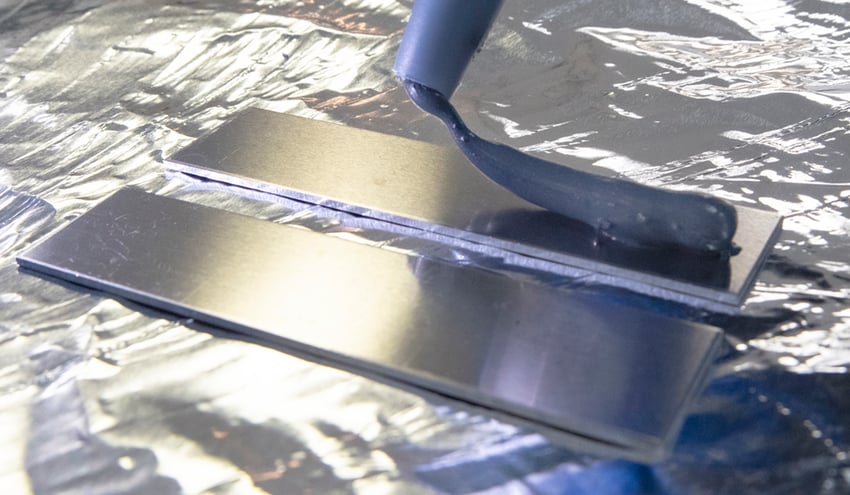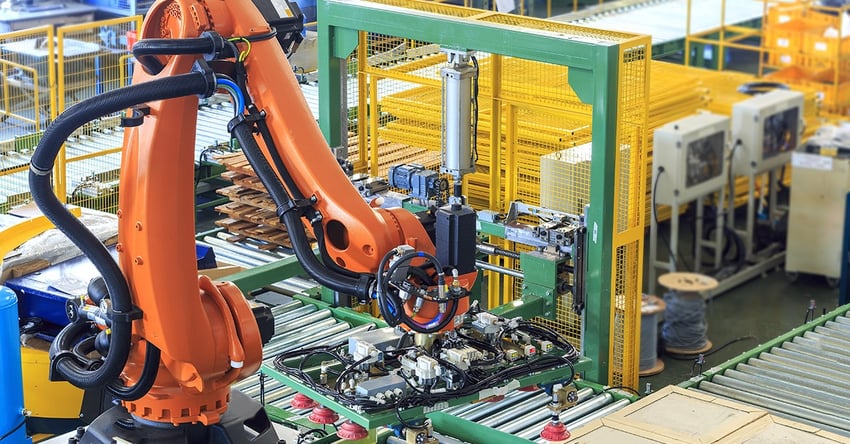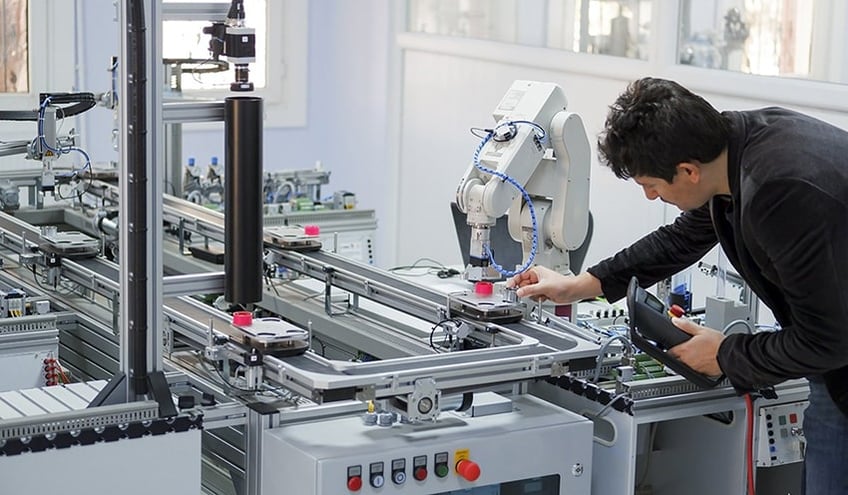In the realm of manufacturing and production, achieving strong and durable bonds is crucial for ensuring the quality and reliability of products. However, even with meticulous adherence to established processes, companies can sometimes face unexpected challenges that hinder their bonding capabilities. Such was the case for one particular company, whose struggles with bonding brought them face-to-face with a surprising revelation: the importance of surface intelligence.
Despite their best efforts, the company grappled with bonding issues that seemed to defy explanation. When a thorough investigation was conducted, the root cause of their challenges was finally unraveled. A seemingly innocuous decision to purchase a substitute sandpaper from a local hardware store had inadvertently disrupted their bonding process. It turned out they lacked surface intelligence.
Bonding is integral to much of today's product design and manufacture. It reduces part weight and piece count, saves money, and improves performance and appearance. But bonding is complicated, and the consequences can include steep costs and reputational damage when it goes wrong.
Successful bonding comes down to understanding surface conditions. At Brighton Science, we discuss this in terms of surface intelligence. Our position is that surface intelligence helps businesses unlock latent potential. Let's explain what that means in terms of product design and the choices people make.
Unseen Forces Can Impact Product Success
It takes a team of teams to bring a product to market. The design team creates the concept, the manufacturing team builds it, and various engineering functions develop and codify the process. Success hinges on collaboration between these contributors.
Working together, they consider what could go wrong and take steps to prevent such events. Inevitably, though, with complex products and processes, things are overlooked, or decisions are made that may seem insignificant but affect quality or cost. These unseen forces are the human factor and can turn out very costly.
Two Types of Mistakes
Human error can be active or passive. An active error occurs when someone makes a bad decision, often with good intentions but without the information and understanding needed.
A passive error is when something that wasn't considered during product design and process development occurs or doesn't occur. In this case, the problem wasn't the result of a decision but rather the result of a decision not being taken.
Let's look at some examples of these as the concept relates to bonding processes.
1. Active Human Error
The example of the sandpaper problem mentioned earlier serves as a prime illustration. Although the individual involved had good intentions, their actions unknowingly resulted in a quality issue. This occurred because the organization didn't completely understand the necessary surface condition and the proper procedure to achieve it.
We observed a second example of an active error at a plant performing adhesive bonding on large composite products. Management was seeing a higher level of bond problems on the 3rd Shift and wanted to know why.
Our scientists discovered the 3rd Shift crew was swapping a solvent with an unpleasant odor for one that didn't smell as bad. What they didn't know was how this new solvent interacted with the composite. Chemistry is complicated, and their alternative, sweeter-smelling solvent didn't generate the right surface energy. As a result, the bonds were bad.
In both these examples, people chose not to comply with the defined process, not because they wanted to cause harm but due to a lack of understanding. We see this as a common issue in manufacturing.
2. Passive Errors
Here are two examples of bonding problems resulting from factors or issues no one considered. We call these passive errors.
To begin, let's take a look at the issue of silicon. Silicon can pose challenges in various bonding processes, prompting manufacturers to take measures to prevent its presence on the surfaces to be bonded. However, silicon often appears unexpectedly or in surprising ways. A prime example is the use of hand cream during winter. People apply hand cream to combat dry skin, unknowingly transferring it to their workplace. Recognizing this, certain companies implement protocols to regulate employee cosmetics and skincare products. Nonetheless, effectively managing this aspect proves to be daunting, resulting in occasional errors.
The second instance pertains to challenges arising from external factors that occur before the material is brought to the facility. Process engineers can often overlook these factors. We identified a specific bonding issue that originated from the delivery of a steel coil. The delivery occurred on a cold day when the roads were salted, leading to surface contamination of the steel. Upon investigation, it was discovered that the supplier was unaware of the material's intended use and had not taken any necessary precautions. The possibility of salt getting onto the steel had not been considered by anyone involved.
Understand Why Compliance Matters
When developing products and processes, design and manufacturing teams consider variation. They plan for issues like the normal distribution of material properties, but they cannot control human or environmental factors.
When investigating bond failures, we often find the root cause is beyond the scope of what the process engineer could have considered. In such cases, the real issue is compliance with procedures and instructions, which is a management issue.
The Impact of Differing Priorities
While everyone in the manufacturing business has the same goal – to ship good products – each team or function has differing priorities. These often conflict, and the result is that product quality suffers.
To give a simple example, Product Development wants to achieve the highest levels of functionality or performance. Purchasing, though, is tasked with driving down material costs while Production and Process Development look for ways to do things faster with less. (Reducing washing and drying times, for example, or extending intervals between mold cleanings.)
The customer-supplier dynamic adds more complexity. To take an automotive example, OEMs focus on the cost and performance of parts they purchase from their Tier 1 suppliers. At the suppliers, though, margins are tight, and there's a strong focus on costs, possibly at the expense of quality and performance.
To address these mismatches, it helps to have a common language. In the case of bonding performance, the water contact angle provides a measurement that links the goals of these teams and functions.
Surface Intelligence and Water Contact Angle as a KPI
Bonding is a critical aspect of product quality, but as the examples above show, globally, there needs to be more understanding of how the surface condition affects bonds. This is the problem we describe as a lack of surface intelligence.
If manufacturers were more aware of this topic and had a way to measure it, they could unlock significant cost and quality gains. Observing plants in many industries, we see three types of opportunity: addressing human choices, addressing the supply chain, and addressing the product lifecycle.
Water contact angle measurement provides a standard or common language linking these various functions and goals. Water contact angle indicates surface energy, which is the critical parameter in achieving satisfactory bonding. Thus, surface conditions can be measured immediately before bonding to verify that the material is ready.
Using water contact angle as a KPI will link the product manager and the process engineer to the plant floor. Everyone will have more confidence that the product is being manufactured as planned. Moreover, they'll have the assurance of monitoring and control when new factors enter the manufacturing process, including those active and passive errors that people introduce.
Better Informed Decision-Making
For many manufacturers, surface intelligence is an unrealized opportunity to cut costs and improve quality. By adopting water contact angle as a KPI at every stage of the product lifecycle, they can eliminate the waste from human choices, even when those choices are made with the best intentions.
To learn how your organization can leverage surface intelligence to make informed decision-making reduce costs and gain more opportunity, download the eBook “The Advanced Guide to Transforming Product Development Through Surface Intelligence Data & Technology.”

















